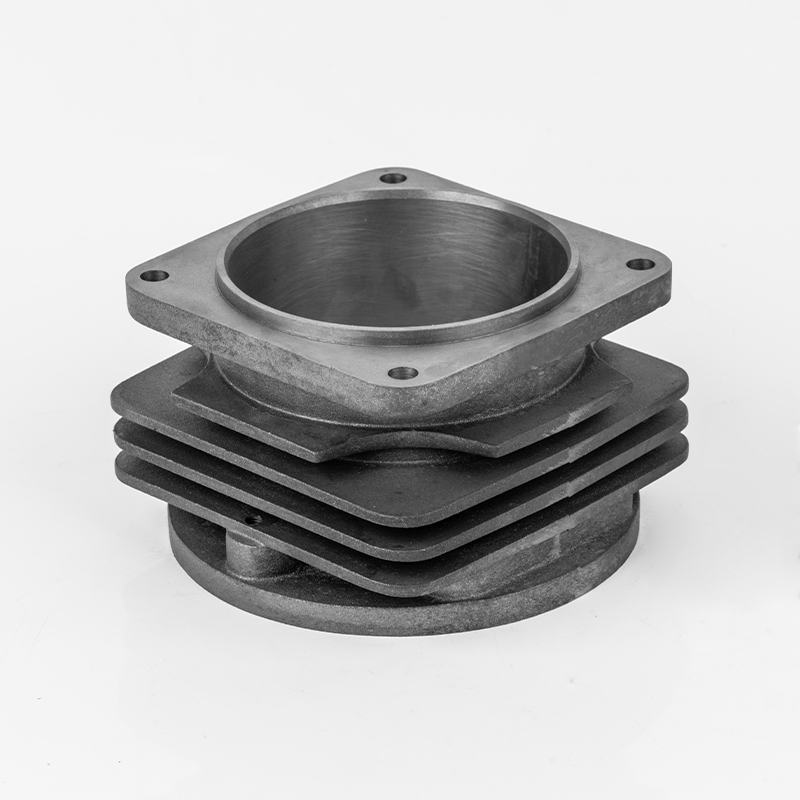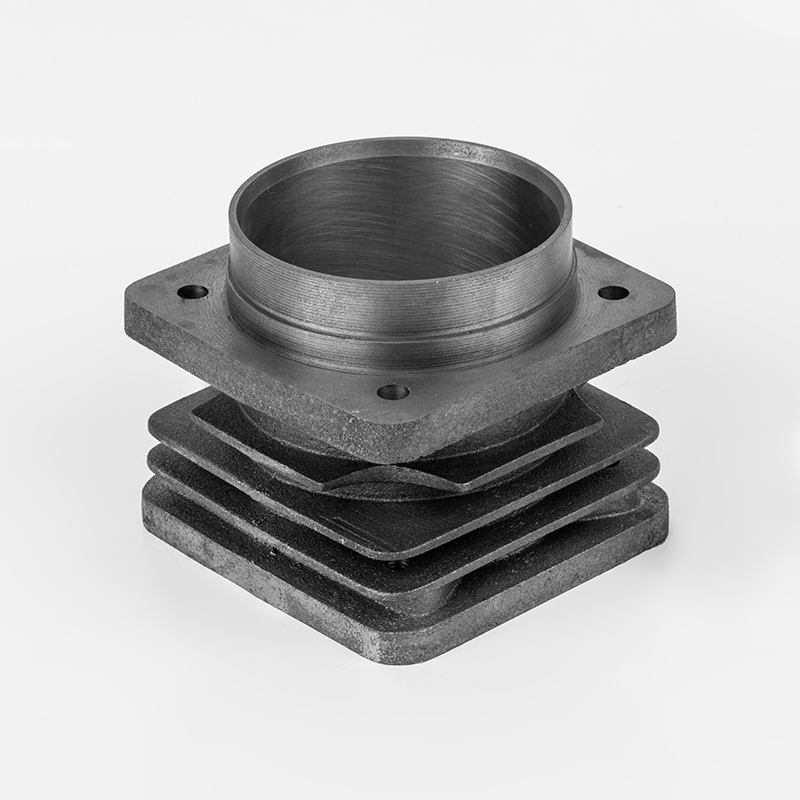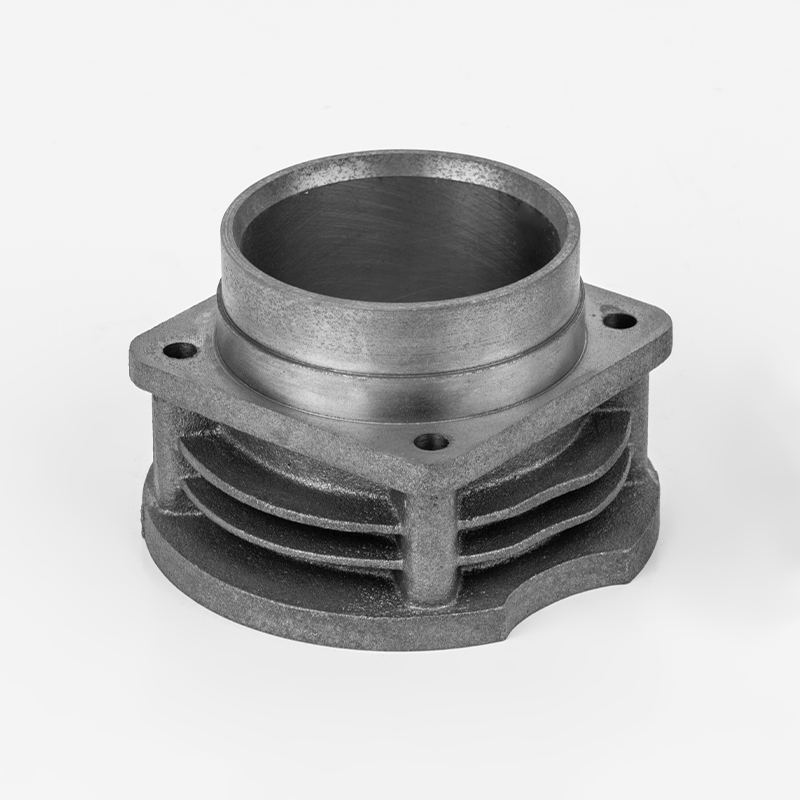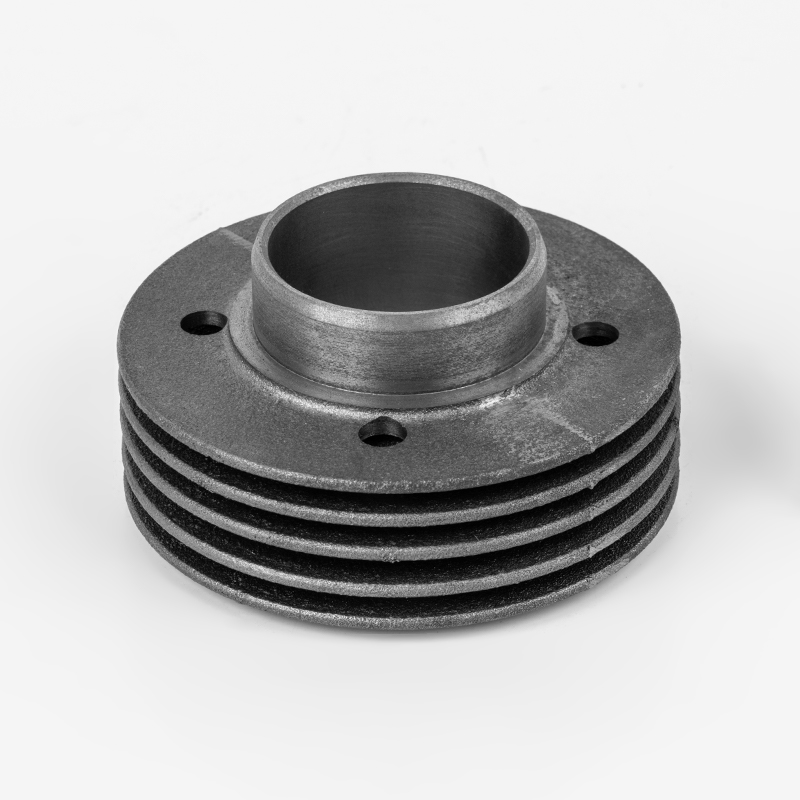In the industrial air compressor industry, cylinders are core components, and their performance and reliability directly impact the operating efficiency of the entire system. Ningbo Daxie Development Tianshan Cylinder Block Co., Ltd. continuously increases its R&D investment, investing a portion of its annual revenue into new product and technology innovation to ensure technological leadership and market competitiveness in this field.
Question 1: What role does the air compressor cylinder play in the compression system?
The cylinder is the "heart" of the air compressor, primarily responsible for drawing in, compressing, and delivering high-pressure air. Through reciprocating or rotational motion, it converts mechanical energy into air pressure energy, providing a stable air source for industrial equipment. This process directly impacts the compressor's overall efficiency, energy consumption, and operational stability. For example, improper cylinder design can lead to poor airflow or energy loss, causing system failure. Ningbo Daxie Development Tianshan Cylinder Block Co., Ltd., through continuous R&D investment, has achieved breakthroughs in optimizing cylinder structure. For example, through innovative materials and treatment processes, it has improved the cylinder's sealing and durability, ensuring high performance under harsh operating conditions. This demonstrates how the company, through technological upgrades, has transformed the cylinder from a simple functional component into the cornerstone of efficient system operation.
Question 2: What are the main types of air compressor cylinder seriess, and what are their respective applications?
Cylinders are generally categorized into reciprocating, rotary, and centrifugal types. Reciprocating cylinders utilize a piston-cylinder structure and are suitable for high-pressure, low-flow applications, such as automotive repair or small factories. Rotary cylinders rely on a screw or vane design and are suitable for continuous operation in medium-pressure, medium-flow environments, such as manufacturing production lines. Centrifugal cylinders utilize a high-speed rotating impeller and excel in high-flow, low-pressure applications, such as large industrial cooling systems. The choice of each type depends on operating pressure, flow requirements, and energy consumption targets. Ningbo Daxie Development Tianshan Cylinder Block Co., Ltd. focuses on diversified innovation in its R&D, developing customized solutions for diverse customer needs. For example, by improving the dynamic balancing design of rotary cylinders, vibration and noise are reduced, ensuring their application value in noise-sensitive areas. This demonstrates how the company integrates market trends to promote the flexible and intelligent evolution of its cylinder products.
Question 3: How does material selection affect the performance and lifespan of cylinders?
Cylinder material is a key factor in determining its durability and reliability. Common materials include cast iron, aluminum alloy, and composite materials. Cast iron cylinders offer high wear resistance and are suitable for high-load environments; aluminum alloy cylinders are lightweight, easy to maintain, and dissipate heat; composite cylinders are reinforced with high-strength fibers for improved corrosion and impact resistance. Improper material selection can lead to premature wear, leakage, or thermal deformation, which can lead to system failure. Ningbo Daxie Development Tianshan Cylinder Block Co., Ltd. invests annually in R&D, focusing on exploring new materials and applying innovative processes. For example, it develops environmentally friendly coating technologies to extend the service life of cylinders in high-temperature and high-humidity environments. This advancement in materials engineering not only reduces customer maintenance costs but also strengthens the company's competitiveness in sustainable development.
Question 4: How can I maintain my air compressor cylinder seriess to extend their service life?
Maintaining cylinders requires attention to three key aspects: lubrication, cleaning, and regular monitoring. Proper lubrication reduces friction and wear, preventing piston sticking; regular cleaning prevents dust and impurities from accumulating, ensuring smooth airflow; and monitoring operating parameters such as temperature and pressure can help detect anomalies early and prevent potential failures. Ignoring these aspects can accelerate cylinder aging, leading to reduced efficiency or unexpected downtime. Ningbo Daxie Development Tianshan Cylinder Block Co., Ltd. emphasizes preventive maintenance strategies in its technological innovation. By developing intelligent diagnostic tools, it helps users achieve remote monitoring and predictive maintenance, thereby maximizing cylinder life. For example, the company's next-generation cylinder system integrates an adaptive control system that automatically adjusts lubrication cycles, reducing the need for manual intervention. This is the result of its continuous R&D investment, transforming maintenance knowledge into practical solutions.
Question 5: How do innovative technologies drive industry progress in cylinder series design?
Innovation is the core driving force behind the evolution of cylinder series technology, encompassing structural optimization, intelligent control, and energy efficiency improvements. Advanced structural designs, such as variable-volume cylinders, dynamically adapt to load changes, improving energy utilization. Intelligent control systems utilize sensors and algorithms to achieve precise pressure regulation, reducing energy waste. Green technologies, such as low-friction coatings, reduce carbon emissions. These innovations not only enhance performance but also expand applications into new energy and automation sectors. Ningbo Daxie Development Tianshan Cylinder Block Co., Ltd. invests a percentage of its annual revenue in R&D to promote the implementation of these cutting-edge technologies. For example, through industry-university-research collaboration, it develops a modular cylinder platform that simplifies installation and upgrades, providing customers with future-oriented solutions. This highlights how the company uses innovation as an engine to drive the development of its cylinder series toward higher efficiency and sustainability.
Question 6: How does the cylinder series handle the challenges of high pressure and extreme environments?
Under high pressure or extreme environments (such as high temperature, high humidity, or corrosive atmospheres), cylinders face risks such as seal failure and material fatigue. Countermeasures include optimizing seal structures (such as multiple seal ring designs) and using specialized materials (such as oxidation-resistant alloys) to ensure airtightness. Furthermore, thermal management systems prevent thermal stress accumulation through heat dissipation channels or cooling devices. These measures ensure stable system operation under harsh conditions. Ningbo Daxie Development Tianshan Cylinder Block Co., Ltd.'s R&D team focuses on environmentally adaptable innovations, such as developing anti-corrosion coatings and adaptive air pressure regulation mechanisms to address diverse industrial scenarios. Their continuous technological iteration, driven by deep insight into market needs, demonstrates how the company transforms challenges into competitive advantages through accumulated knowledge.
Question 7: What are the key considerations for noise and vibration control in cylinders?
Noise and vibration are common issues in cylinder operation, primarily caused by mechanical friction and aerodynamic shock. Control strategies include optimizing motion balance (e.g., reducing piston reciprocating inertia), employing sound-absorbing materials (e.g., damping pads), and designing buffering devices (e.g., gas spring systems) to reduce sound pressure levels and mechanical stress. This not only improves operator comfort but also reduces equipment wear. Ningbo Daxie Development Tianshan Cylinder Block Co., Ltd. prioritizes user experience in its R&D efforts, implementing innovative noise reduction technologies, such as integrated vibration damping modules, to achieve quiet operation suitable for sensitive areas such as offices and medical facilities. This user-centric R&D approach exemplifies how the company is shaping new industry standards through technological leadership.
Question 8: How will future trends in pneumatic cylinders impact industrial applications?
Pneumatic cylinders are evolving towards intelligence, greening, and modularization. Intelligent integration of Internet of Things (IoT) technology enables remote monitoring and data analysis; greening focuses on energy efficiency improvements and environmentally friendly materials to reduce carbon footprints; and modularization simplifies customization and maintenance, enabling rapid deployment. These trends will drive cylinders to play a greater role in smart manufacturing and energy-saving projects. Ningbo Daxie Development Tianshan Cylinder Block Co., Ltd. actively invests in these cutting-edge areas through annual R&D, such as developing a cylinder series made of recyclable materials to support global environmental initiatives. The company's unwavering commitment to innovation enables it to maintain its leadership amidst industry change and provide forward-looking value to its customers.
The knowledge base of its air compressor cylinder series series encompasses multiple dimensions, including design, materials, maintenance, and innovation. Its continuous evolution relies on sustained investment in R&D. Ningbo Daxie Development Tianshan Cylinder Block Co., Ltd. adopts a pragmatic innovation strategy, investing revenue annually to support technological breakthroughs, ensuring that its cylinder series not only meets current needs but also anticipates future challenges. This encourages us to consider: In a rapidly changing industrial environment, how can accumulated knowledge be transformed into a competitive advantage? The answer may lie in companies like Ningbo Daxie Development Tianshan Cylinder Block Co., Ltd., which prioritize R&D as a core driver, elevating their cylinder series from basic components to the engine of efficient solutions.

 English
English Español
Español عربى
عربى










